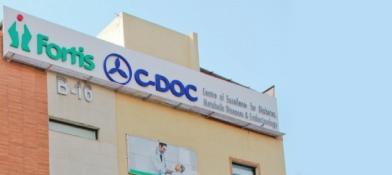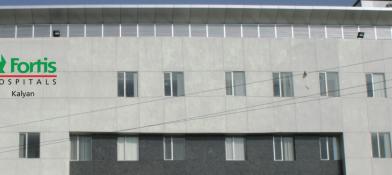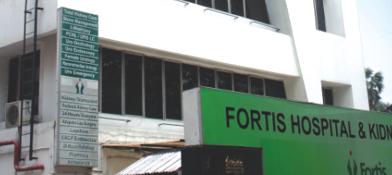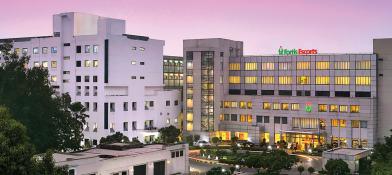ACL Reconstruction: Purpose, Procedure & Recovery
Anterior Cruciate Ligament (ACL) reconstruction is a highly specialized surgical procedure designed to rebuild a torn ACL, one of the most critical ligaments in the knee. An ACL tear is a common and debilitating injury, particularly among athletes and active individuals, leading to significant knee instability and pain. The surgery involves removing the damaged ligament and replacing it with a segment of tendon, known as a graft, which serves as a scaffold for a new ligament to grow on.
This procedure is typically performed using minimally invasive arthroscopic techniques, which allow for smaller incisions, less pain, and a faster initial recovery. The ultimate goal of ACL reconstruction is to restore the knee's stability, function, and strength, enabling patients to return to their occupational, recreational, and sporting activities with confidence and to prevent long-term damage to other knee structures like the meniscus and cartilage.
What is ACL Reconstruction?
ACL reconstruction is a surgical procedure, not a simple repair. Because a torn ACL does not have an adequate blood supply to heal on its own, it must be completely rebuilt. During the surgery, the surgeon removes the remnants of the torn ligament and replaces it with a new tendon, or graft. This graft is passed through bone tunnels drilled into the femur (thigh bone) and tibia (shin bone) and then secured in place with screws or other fixation devices. Over several months, the body's natural healing processes allow this graft to incorporate into the bone and mature into a new, living ligament.
The surgery is performed arthroscopically. An arthroscope is a thin, tube-like instrument containing a camera and a light source. The surgeon inserts it into the knee joint through a small incision (portal). The camera transmits a magnified, real-time image to a high-definition monitor, allowing the surgeon to see the inside of the knee in great detail. Specialized, small surgical instruments are inserted through other portals to perform the reconstruction, minimizing trauma to the surrounding tissues.
Types of Grafts for ACL Reconstruction:
The choice of graft is a critical decision that you and your surgeon will make together based on your age, activity level, sport, and personal preference.
Autografts (Using your own tissue):
- Patellar Tendon Autograft: A portion of the patellar tendon (which connects the kneecap to the shin bone) is harvested with bone blocks from each end. It is considered a gold standard for its strength and reliable bone-to-bone healing.
- Hamstring Tendon Autograft: Two tendons from the hamstring muscles on the inside of the knee (semitendinosus and gracilis) are harvested. This option avoids the patellar tendon, potentially reducing post-operative pain at the front of the knee.
- Quadriceps Tendon Autograft: A portion of the quadriceps tendon (which connects the large thigh muscle to the kneecap) is taken, sometimes with a piece of bone. It is a robust graft and is gaining popularity as a primary choice.
Allografts (Using donor tissue):
- An allograft is a tendon harvested from a deceased donor that has been screened, sterilized, and prepared. This option avoids the need for a second incision to harvest your own tissue, potentially leading to less initial pain and a faster return to daily activities. However, the biological integration process may be slower compared to an autograft.
When is ACL Reconstruction Recommended?
While not every ACL tear requires surgery, reconstruction is strongly recommended for individuals who wish to return to a high level of activity or who experience persistent knee instability. The decision is based on a thorough clinical evaluation.
- Active Individuals and Athletes: Surgery is the standard of care for athletes and active people who participate in sports involving pivoting, cutting, or sudden changes in direction (e.g., football, basketball, badminton, kabaddi). Without a stable ACL, returning to these activities is nearly impossible and risks further injury.
- Knee Instability: If your knee gives way or feels unstable during simple, everyday activities like walking on uneven ground, climbing stairs, or twisting, reconstruction is recommended to restore normal function and confidence.
- Associated Injuries: ACL tears often occur along with damage to other knee structures, such as the meniscus (the knee's shock absorber) or other ligaments (like the MCL). Surgery is often necessary to repair these associated injuries at the same time as the ACL reconstruction.
- Young Patients: In younger, active patients, surgical reconstruction is generally advised to provide long-term stability and reduce the risk of developing early-onset osteoarthritis from chronic instability.
Understanding the Underlying Condition: The ACL Tear
Anatomy of the Knee
The knee is a complex hinge joint formed by three bones: the femur (thigh bone), the tibia (shin bone), and the patella (kneecap). It is held together by four main ligaments, which are strong bands of tissue that connect bones to each other:
- Anterior Cruciate Ligament (ACL): Located in the center of the knee, it controls the forward movement and rotation of the shin bone.
- Posterior Cruciate Ligament (PCL): Works with the ACL to control back-and-forth motion.
- Medial Collateral Ligament (MCL): Provides stability to the inner side of the knee.
- Lateral Collateral Ligament (LCL): Provides stability to the outer side of the knee.
Mechanism of an ACL Tear
The ACL is most commonly injured through non-contact mechanisms. This happens when an athlete plants their foot firmly on the ground and then quickly changes direction, pivots, or lands awkwardly from a jump. Common scenarios include:
- Suddenly slowing down and changing direction (a cutting maneuver).
- Pivoting with your foot firmly planted.
- Landing incorrectly from a jump.
- A direct blow to the side of the knee, such as during a football tackle.
When the tear occurs, many people hear or feel a pop in their knee, followed by immediate pain, significant swelling within a few hours, and a feeling that the knee is unstable or giving way.
Risk Factors & When to See a Doctor
You should seek immediate medical attention from an orthopedic specialist if you experience a knee injury with the following symptoms:
- A loud pop or a popping sensation in the knee at the time of injury.
- Severe pain and inability to continue activity.
- Rapid swelling that develops within the first 24 hours.
- A feeling of instability or your knee buckling when you try to bear weight.
- Loss of the full range of motion of the knee.
Prompt evaluation, including a physical examination by an expert and often an MRI, is crucial for an accurate diagnosis and to determine the best course of treatment.
Our Specialists
Fortis Healthcare is home to some of the most renowned orthopedic surgeons in the country, specializing in arthroscopic surgery and sports medicine.
Dr. Amite Pankaj Aggarwal
PRINCIPAL DIRECTOR & HOD - ORTHOPAEDICS | Fortis Shalimar Bagh
Dr. Gurinder Bedi
PRINCIPAL DIRECTOR & HOD - ORTHOPAEDICS | Fortis Vasant Kunj
Dr. Manoj Miglani
PRINCIPAL DIRECTOR ORTHOPAEDICS | Fortis Vasant Kunj
Dr. Narayan Hulse
PRINCIPAL DIRECTOR ORTHOPAEDICS | Fortis BG Road
Patient Stories
“As a weekend footballer, tearing my ACL felt like the end of my active life. The instability was unnerving; I couldn’t even trust my knee to walk on the grass. The team at Fortis was fantastic. My surgeon explained the graft options clearly, and the physiotherapy team created a rigorous rehab plan. The journey was long, but nine months later, I was back on the pitch, feeling strong and stable. The surgery didn't just fix my knee; it gave me back my passion.” — R. Mehra, 28, Delhi
“I injured my knee while trekking, and the feeling of it giving way was terrifying. I was worried about a long, painful surgery. The arthroscopic procedure was far less invasive than I imagined. The most challenging part was the rehabilitation, which requires dedication. But seeing the progress week by week, from walking without crutches to jogging on a treadmill, was incredibly motivating. My knee feels solid now, and I’m planning my next trek.” — A. Khanna, 35, Gurugram
Diagnosis & Pre-Operative Workup
An accurate diagnosis is the first step. Your orthopedic surgeon will conduct a detailed evaluation.
- Physical Examination: The surgeon will perform specific tests, such as the Lachman test and the pivot-shift test, to assess the stability of the ACL.
- Magnetic Resonance Imaging (MRI): An MRI scan is the gold standard for diagnosing an ACL tear. It provides detailed images of the ligaments, tendons, cartilage, and meniscus, allowing the surgeon to confirm the tear and identify any associated injuries.
- X-rays: While X-rays do not show ligaments, they may be ordered to check for any bone fractures that occurred with the injury.
Preparing for Your ACL Reconstruction
Preparation for surgery begins several weeks before the scheduled date.
- Pre-habilitation: Your doctor will likely recommend a course of physiotherapy before surgery. The goals are to reduce swelling, restore the full range of motion in your knee, and strengthen the surrounding muscles (especially the quadriceps). Going into surgery with a mobile, strong knee significantly improves post-operative outcomes.
- Medical Clearance: You will have a pre-anesthesia check-up to ensure you are medically fit for the procedure.
- Medication Review: Inform your surgeon of all medications you are taking. You will need to stop blood-thinning medications for a period before surgery.
- Fasting: You must stop eating and drinking for at least eight hours before your surgery.
- Arrange Support: Plan for someone to drive you home and assist you for the first few days after surgery, as you will be on crutches and have limited mobility.
What Happens During the Procedure
The surgery is a meticulously planned process.
- Anesthesia: You will be given either general anesthesia (you are asleep) or a spinal block (you are numb from the waist down).
- Graft Harvest (if autograft): If you are using your own tissue, the surgeon will first make a small incision to harvest the patellar, hamstring, or quadriceps tendon.
- Arthroscopy: The surgeon makes two or three small incisions around your knee. The arthroscope is inserted through one, and sterile fluid is pumped into the knee to expand it and provide a clear view.
- Reconstruction: The torn ACL remnants are removed. The surgeon then uses a precise guide to drill bone tunnels into the tibia and femur. The new graft is pulled through these tunnels and securely fixed in place.
- Closure: The instruments are removed, and the small incisions are closed with stitches or surgical tape.
After the Procedure: Recovery & Follow-Up
Recovery from ACL reconstruction is a long and structured process that requires active participation in a rehabilitation program.
The Rehabilitation Phases:
- Phase 1: The First Two Weeks (Protection and Healing): The focus is on controlling pain and swelling, protecting the graft, and gently regaining knee motion. You will use crutches and a knee brace, and your physiotherapist will guide you through gentle range-of-motion and muscle activation exercises.
- Phase 2: Two to Six Weeks (Restoring Mobility): You will gradually bear more weight on your leg and aim to wean off crutches. The goals are to achieve a full range of motion and begin light strengthening exercises.
- Phase 3: Six Weeks to Three Months (Building Strength): This phase focuses on progressive strengthening of the quadriceps, hamstrings, and gluteal muscles. Balance and proprioception (your sense of joint position) training are introduced.
- Phase 4: Three to Six Months (Functional Strengthening): You may be cleared to begin jogging in a straight line. Exercises become more dynamic and sport-specific, preparing the knee for higher-level activities.
- Phase 5: Six to Nine Months and Beyond (Return to Sport): This is the final phase, where you undergo rigorous testing to ensure your knee is strong, stable, and ready for the demands of your sport. A gradual, planned return to full competition is essential to prevent re-injury.
Risks & Possible Complications
ACL reconstruction has a very high success rate, but like any surgery, it has potential risks:
- Infection
- Bleeding and blood clots
- Stiffness or loss of motion in the knee
- Graft failure or re-tear
- Numbness or nerve irritation around the incision sites
- Pain in the front of the knee (particularly with patellar tendon grafts)
Benefits of ACL Reconstruction
The primary benefit is a return to a full and active lifestyle.
- Restored Knee Stability: The surgery provides a stable knee that you can trust during daily life and sports.
- Return to Sport: Over 90% of patients are able to return to some level of sporting activity.
- Prevention of Further Damage: By stabilizing the knee, the surgery helps protect the meniscus and cartilage from the wear and tear that can result from chronic instability, thereby reducing the risk of early arthritis.
Myths vs Facts
Take the Next Step
An ACL tear can be a significant setback, but it doesn't have to mean the end of your active lifestyle. With an accurate diagnosis, expert surgical technique, and a dedicated rehabilitation program, you can achieve a strong, stable knee. If you have suffered a knee injury and are experiencing instability, our team of world-class orthopedic and sports medicine surgeons is here to provide a comprehensive evaluation and guide you on the path to recovery.
CTA: Book a Consultation | Get a Second Opinion
Frequently Asked Questions
1. How long does the surgery take?
Ans. The surgical procedure itself typically takes between 60 and 90 minutes.
2. How long will I be in the hospital?
Ans. Most patients are discharged on the same day as the surgery or stay for one night for observation and pain management.
3. How soon can I walk after surgery?
Ans. You will be able to walk with the assistance of crutches and a knee brace on the day of or the day after surgery. You will likely use crutches for two to four weeks.
4. When can I drive?
Ans. This depends on which knee was operated on and whether your car is manual or automatic. You must be completely off narcotic pain medication and have regained sufficient muscle control, typically around four to six weeks.
5. What is the success rate of ACL reconstruction?
Ans. The success rate, defined as having a stable knee that allows for a return to desired activities, is very high, typically reported between 85% and 95%.
6. Will I have a lot of pain after the surgery?
Ans. You will have post-operative pain, which will be managed with a multi-modal approach, including a nerve block, IV medication in the hospital, and oral pain medication at home.
7. Will I have to wear a brace?
Ans. Yes, you will likely wear a hinged knee brace for the first four to six weeks to protect the graft as it heals.
8. Is physiotherapy really necessary?
Ans. Yes, physiotherapy is absolutely essential. It is the most critical component of your recovery and is directly linked to the success of the surgery.




































